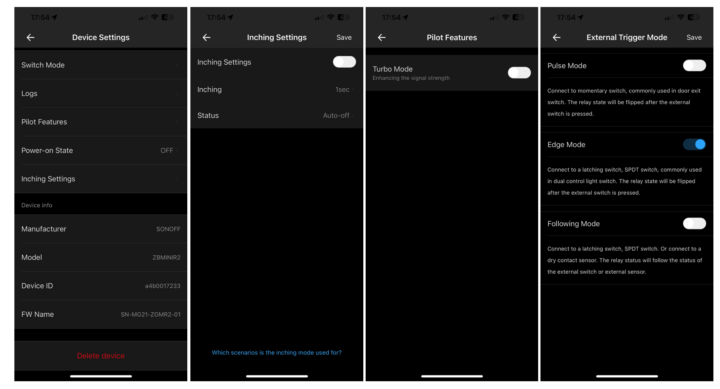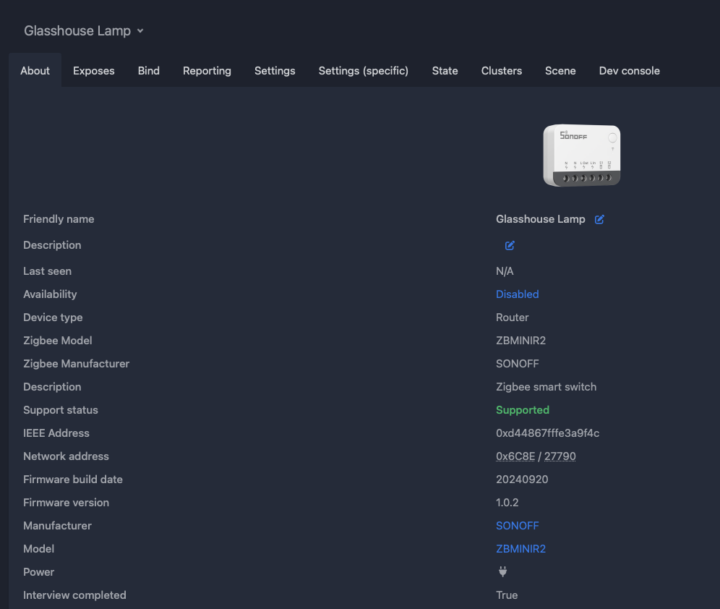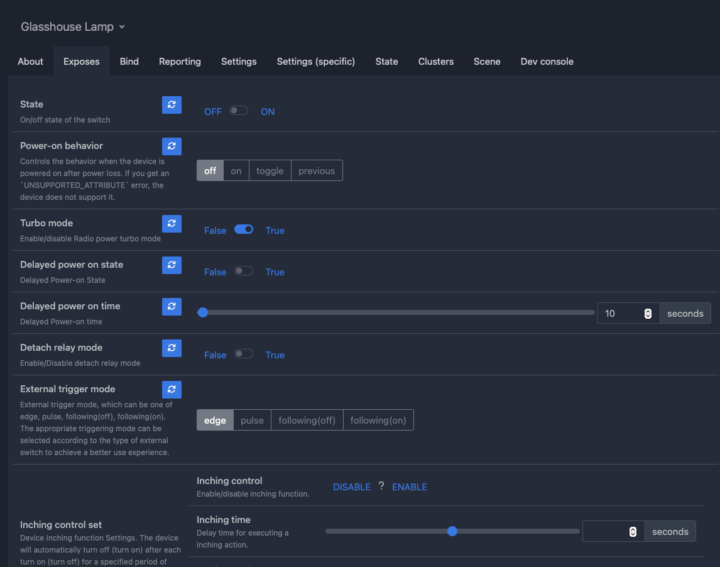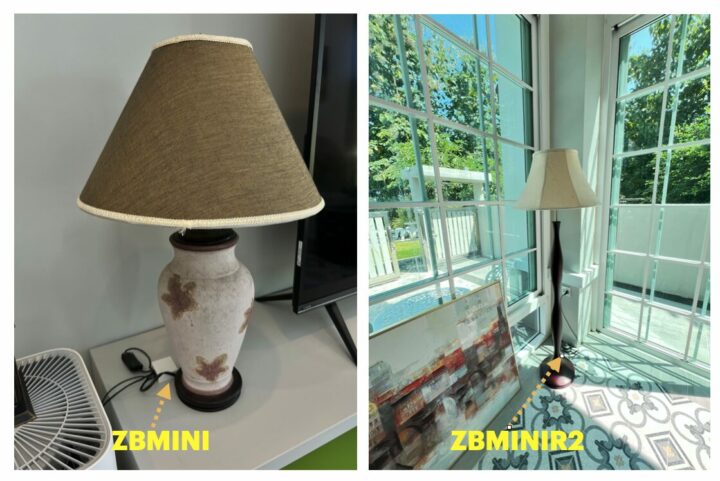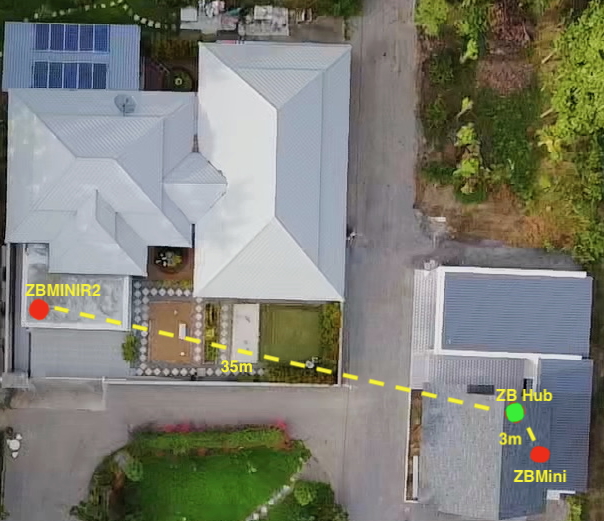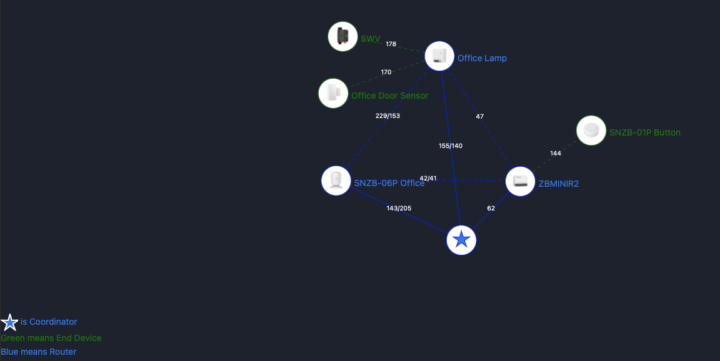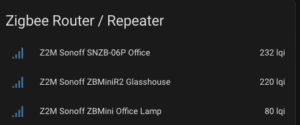We have received another Zigbee device from SONOFF for review, namely the ZBMINIR2 which we’ll review with both eWelink adn Home Assistant. Many people may be familiar with the first-generation mini Zigbee Switch that SONOFF released in 2020, known as the ZBMINI. ZBMINI was one of the early Zigbee Switch models, which also acted as a Zigbee Router. The ZBMINIR2 is SONOFF’s second-generation mini Zigbee Switch including both software and hardware upgrades compared to its predecessor. Improvements include a smaller size, better signal quality, an increase in the number of supported devices (2x), wider coverage (5x), and additional features.
Let’s dive into the details.
Unboxing ZBMINIR2 Zigbee switch
Inside the box, you’ll find a small user manual and the ZBMINIR2 device as usual. It is notably smaller than the predecessor model, which makes installation much easier in many cases. For example, it can now fit into the wall box behind an existing traditional light switch compatible with EU-type, 86-type, and 120-type switches. Compared to the previous ZBMINI model, the size is smaller by roughly 40%. From what we’ve observed, SONOFF’s latest Mini Switch devices, like the ZBMINIL2 (aka Zigbee Mini Extreme), MiniR4, and MiniR4M are all similarly sized. See the comparison picture below for reference.
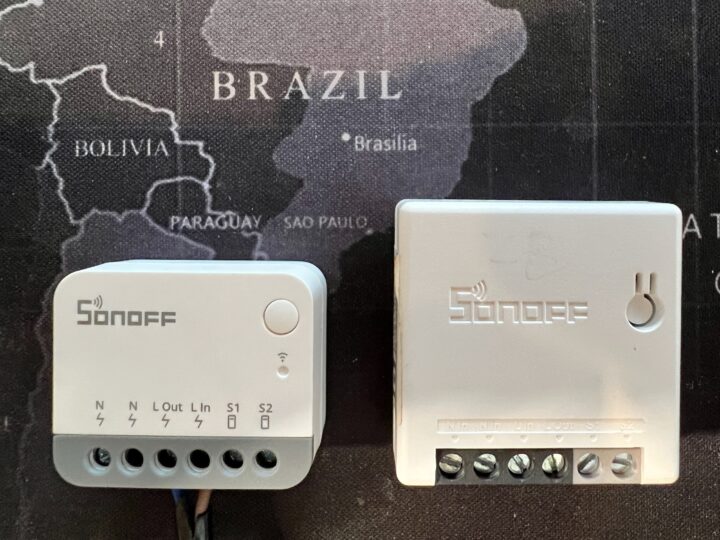
The ports remain the same as its predecessor. The ZBMINIR2 model requires both a Neutral (N) and a Line (L) wire, unlike the ZBMINIL2 model, which does not need a Neutral wire. Therefore, choosing the correct model for your environment is essential. Take note that the ZBMINIL2 cannot act as a Zigbee Router, while the ZBMINIR2 can.
The ZBMINIR2 can connect to external switches, similar to its predecessor, via the S1 and S2 ports. It supports various switch types, such as Door Switch, Momentary Switch, Rocker Switch, and SPDT Switch, enabling two-way operation—either through the eWeLink App or by pressing the external switch. Additionally, the ZBMINIR2 includes a Detach Relay Mode, which disables control from the external switch, making it ideal for specific use cases.
From the specifications comparison within the Mini family above, we can deduct a size reduction of around 40% for the new models. The ZBMINIR2 also doubles the number of devices supported, going from 32 to 64 devices. Additionally, it includes features powered by the new Zigbee chip, such as Turbo Mode, which boosts signal strength and range. The software also introduces new features like Power On State, Group Control, OTA software updates, and the previously mentioned Detach Relay Mode.
SONOFF ZBMINIR2 tear down
Upon opening the ZBMINIR2 device, it appears that the main control board is the same as used in the MiniR4 model (Wi-Fi version), with an additional Zigbee chip circuit board installed alongside the main board. This chip looks to be the popular EFR32MG21 from Silicon Labs. We’ve previously reviewed several SONOFF Zigbee devices using this chip. The advantage of this chip is its enhanced performance, particularly in signal transmission and routing. SONOFF claims that, compared to the older model, the signal range is greater by approximately five times. We will, of course, test its signal strength in this review.
You’ll find the SONOFF ZBMINIR2 specifications in our previous article announcing the launch of the device.
Testing SONOFF ZBMINIR2 with eWeLink
Since the ZBMINIR2 is a Zigbee device, a Zigbee Hub/Coordinator is required to communicate with Zigbee end devices. SONOFF offers several choices, including the SONOFF NSPanel Pro (with a display), SONOFF iHost, SONOFF ZBBridge/ZBBridge-P/ZBBridge-U, or it can also be used with hubs from other platforms like Philips Hue, SmartThings hub v3, and Echo Plus 2nd gen.
The process of adding the ZBMINIR2 to eWeLink is similar to adding any other SONOFF Zigbee device. Follow the steps in the picture below. Start by pressing the “+” button in eWelink’s main screen, then press and hold the button on the ZBMINIR2 device until the light flashes. Once the device is added to eWeLink, you can control it by turning it on and off as usual.
The eWeLink app allows us to customize the settings further (depending on the intended use) as follows:
- Switch Mode: Configures the type of connection to the external switch, based on the type of external switch you are connecting such as SPDT, Rocker, Momentary switch
- Turbo Mode: It’s under Pilot Features, enable it will increase the strength of the Zigbee signal
- Power On State: Sets the switch’s state when power is restored, such as On or Off
- Delay Power On: Enable this with a specific interval time will delay the power on
- Inching: Auto-On or Auto-Off can be chosen after the device is turned off or on respectively, similar to counting down until turn on or off.
Testing SONOFF ZBMINIR2 with Home Assistant
Next, we’ll test the ZBMINIR2 directly with Home Assistant, the most famous open-sourced smart home platform. This means we will totally bypass eWeLink software by setting up or adding the device directly into Home Assistant.
The Home Assistant server needs to have a Zigbee Coordinator (Hub) installed,\ such as the SONOFF Zigbee USB Dongle Model P or Model E. In this test, we have hardware and software environments as follows.
- Home Assistant OS: 12.2
- Home Assistant Software: 2024.9.1 on a Raspberry Pi 4B with 8GB RAM
- Zigbee Coordinator: SONOFF Zigbee USB Dongle Model E
- Zigbee Software Integration: Zigbee2MQTT version 1.40.2
We set up both Zigbee2MQTT and ZHA for Zigbee software integrations. However, we end up continuing testing with Zigbee2MQTT because it fully supports all the features of the ZBMINIR2, unlike ZHA, which provides limited Entity and feature support, thus not utilizing the ZBMINIR2’s full capabilities.
In the picture below, we discovered the ZBMINIR2 device using the Zigbee2MQTT UI and found that all the features available in eWeLink are fully accessible. This includes State, Power On State, Turbo Mode, Detach Relay, Inching, Delay On, and Switch Mode, offering users an excellent range of options.
Since SONOFF claims that the ZBMINIR2 has a significantly increased signal range, we tested its signal quality against the original ZBMINI model. The Turbo Mode was enabled on the ZBMINIR2 to maximize signal strength.
In the below picture, we installed the original ZBMINI and the ZBMINIR2 in a table lamp and a floor lamp, respectively, with both devices connected to external switches for normal on/off operation
Then, we put the two lamps in different locations. The ZBMINI was placed close to the Zigbee Coordinator, about 3 meters away, with a single wall in between. While the ZBMINIR2 was located much farther away, nearly 35 meters from the Zigbee Coordinator, and had to transmit through a building wall, a nearly foot-thick fence wall, and a glass wall
To ensure that both devices connected directly to the Zigbee Coordinator without going through any Zigbee Repeaters, we had Zigbee2MQTT display the connection map, as shown in the picture below.
To compare the data packet transmission quality, we used the LQI values (higher is better) obtained from the Entity in Home Assistant for both the ZBMINI and ZBMINIR2, as shown in the picture below. Notably, even though the ZBMINIR2 is almost 10 times farther away and has more obstruction in between, its LQI value is nearly as high as SNZB-06P that is located side by side with the ZBMINI. Meanwhile, despite the ZBMINI having some handicaps, its data packet transmission quality is way lower. We continued to use the ZBMINIR2 in real-world scenarios for several days, scheduling on/off actions as well as performing ad-hoc toggling and found the response to be almost instantaneous.
Conclusion
Based on our testing over the past few weeks, the SONOFF ZBMINIR2 is a decent Zigbee Mini Switch and Zigbee router. Its smaller size allows it to fit into EU-type, 86-type, and 120-type wall boxes, or to be DIY-installed discreetly in various devices like lamps.
What’s particularly impressive is the significantly stronger Zigbee signal, especially with Turbo Mode on. Considering the test results, we believe it serves well as a Zigbee Router installed in various corners of the home to create a comprehensive Zigbee network. It also supports up to 64 devices. Additionally, the new software features, such as Delay-On, Detach Relay, and Inching (both On and Off), provide a wide range of applications, making it very versatile, similar to the MiniR4 (WiFi), but using the Zigbee protocol instead. The SONOFF ZBMINIR2 worked well with both the eWelink app and Home Assistant in our tests as long as Zigbee2MQTT is used for the latter.
We’d like to thank SONOFF for sending the ZBMINIR2 device for review. It goes for $12.90 on the ITEAD store, and as usual, you can get a 10% discount when using the CNXSOFTSONOFF coupon code.

Computer Engineering who previously worked with multinational IT company, rich experience in IT infrastructure, has a passion on Internet Of Thing i.e., Smart Home, Smart Farm as well as interested on Sustainability such as renewable energy, organic farming
Support CNX Software! Donate via cryptocurrencies, become a Patron on Patreon, or purchase goods on Amazon or Aliexpress



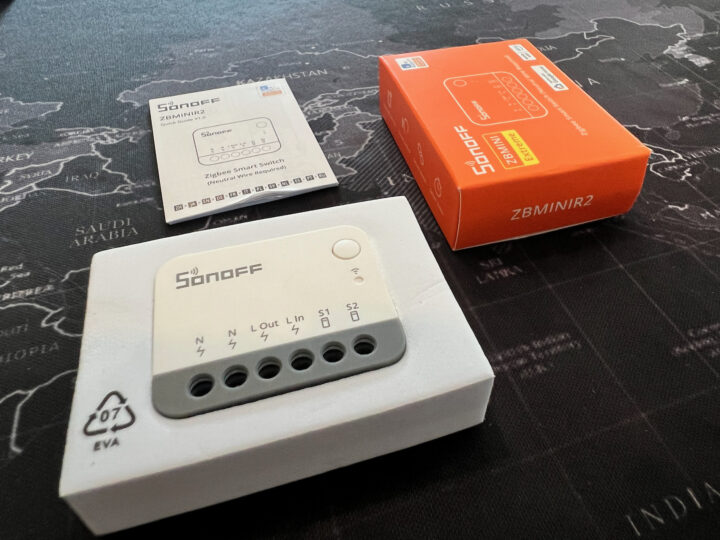
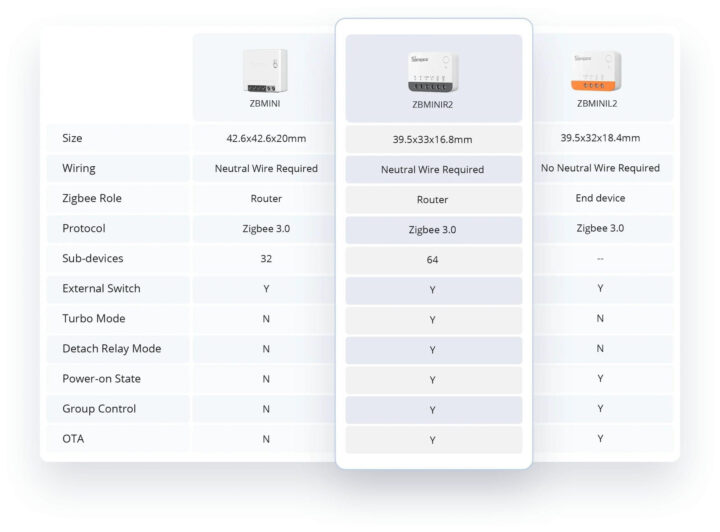
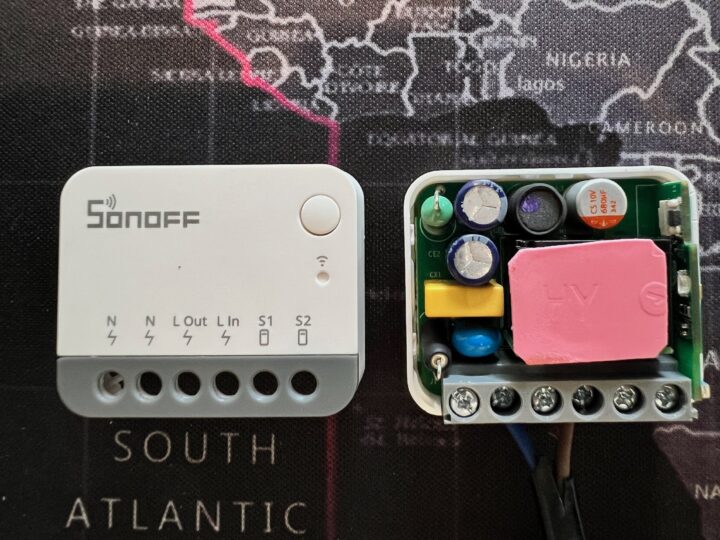
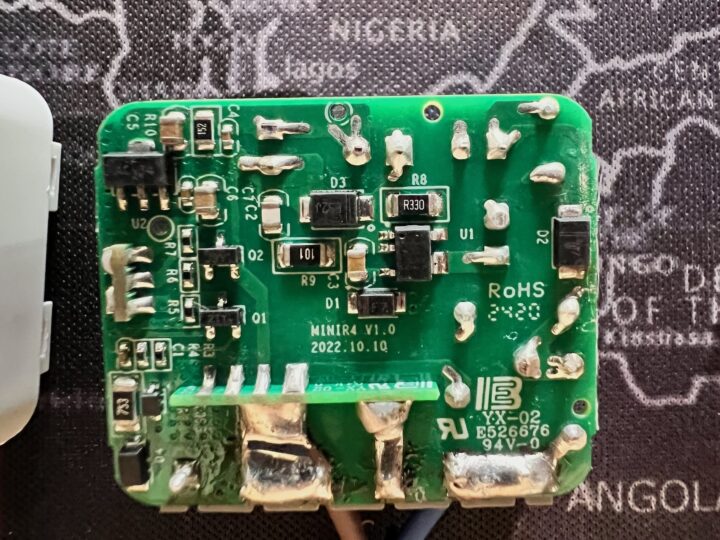
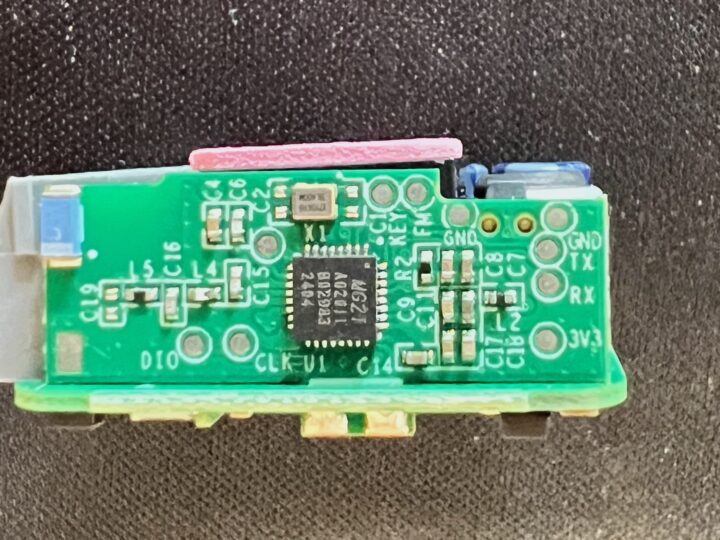
![Sonoff ZBMiniR2 eWeLink Setup] Sonoff ZBMiniR2 eWeLink Setup]](https://www.cnx-software.com/wp-content/uploads/2024/10/SonoffZBMiniR2_eWeLink_Setup1-720x389.jpg)
